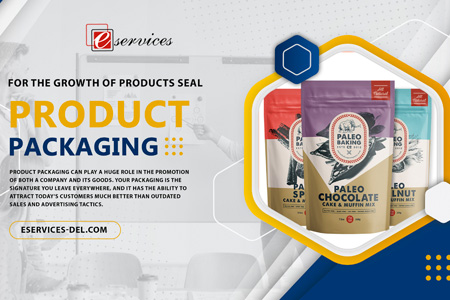Packaging Solutions
Published: Jul 21, 2023
Flexible packaging has revolutionized the way products are packaged, stored, and transported. From food and beverages to pharmaceuticals and personal care items, flexible packaging has become a ubiquitous presence in our daily lives. This article delves into the history, benefits, and sustainability aspects of flexible packaging, highlighting its vital role in modern consumer goods industries.

Flexible packaging, in its early form, can be traced back to ancient civilizations using materials like animal skins and leaves to store and preserve goods. However, it was the 20th century that witnessed significant advancements in materials and manufacturing processes, paving the way for the flexible packaging we know today.
The introduction of plastics in the mid-20th century revolutionized packaging. Materials like polyethylene, polypropylene, and polyester offered remarkable flexibility, durability, and barrier properties, allowing for the development of more sophisticated packaging solutions.
Benefits of Flexible Packaging
- Versatility: Flexible packaging is highly adaptable, accommodating products of various shapes and sizes. Its malleability allows for custom shapes, easy storage, and convenient transportation, reducing the need for bulky packaging.
- Lightweight: Compared to traditional rigid packaging, lexible packagingf is significantly lighter, leading to reduced shipping weight and decreased carbon emissions during transportation.
- Extended Shelf Life: Flexible packaging often incorporates barrier layers that protect products from moisture, oxygen, and light. This barrier function enhances shelf life, reducing food waste and ensuring product freshness.
- Cost-Effective: The lightweight nature of flexible packaging translates into lower production and transportation costs, making it an economical choice for manufacturers and consumers alike.
- Innovation and Design: Advances in printing technology enable vibrant, high-quality graphics on flexible packaging. This opens the door for eye-catching designs, brand differentiation, and improved consumer appeal.
Sustainability and Flexible Packaging
In an era where environmental consciousness is paramount, the sustainability of packaging materials is a crucial consideration. The flexible packaging industry has been actively embracing innovation to reduce its environmental impact.
- Source Reduction: Flexible packaging uses fewer raw materials compared to rigid alternatives, resulting in reduced waste generation and resource consumption.
- Recyclable Materials: Many flexible packaging materials, such as certain types of plastic films and laminates, are now recyclable. Industry initiatives promote the development and adoption of recyclable materials.
- Energy Efficiency: Lightweight flexible packaging requires less energy during production and transportation, contributing to lower greenhouse gas emissions.
- Packaging-to-Product Ratio: The compact nature of flexible packaging allows for higher product-to-packaging ratios, reducing the overall environmental footprint.
- Biodegradable and Compostable Options: Research and development efforts focus on creating biodegradable and compostable flexible packaging materials, offering end-of-life solutions that are environmentally friendly.
Flexible packaging has emerged as a transformative force in the packaging industry, offering numerous advantages over traditional rigid packaging. Its adaptability, cost-effectiveness, and extended shelf life make it a preferred choice for a wide range of products. Furthermore, the industry's commitment to sustainability and innovation demonstrates its dedication to minimizing environmental impact.
As consumer demand for eco-friendly packaging solutions continues to grow, flexible packaging will play a vital role in shaping a more sustainable future. Through continuous advancements in materials, recycling infrastructure, and sustainable practices, the flexible packaging industry strives to strike a balance between consumer convenience and environmental responsibility.
you may also like : Manufacturing Packaging Material |Takeaway Food Packaging | Crafting Visual Communication | Product Packing